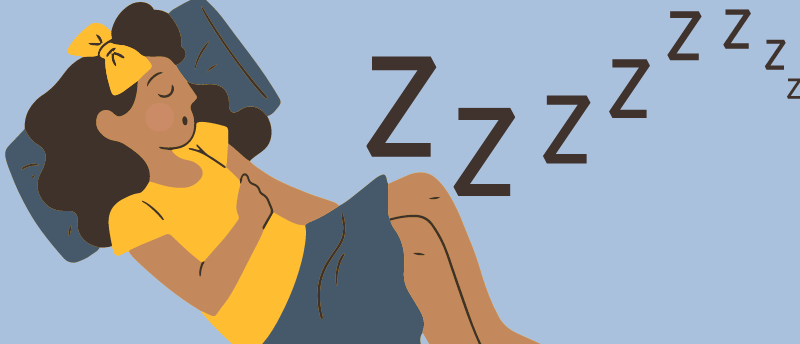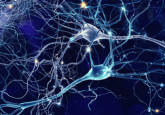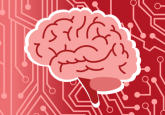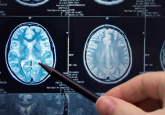Why do we sleep?

As someone who struggles with sleep, I’ve always found it a fascinating – albeit frustrating – subject, so I jumped at the chance to sit down with Professor of neurobiology Yang Dan at the Society for Neuroscience’s annual meeting, Neuroscience 2023 (Washington, DC, USA, 11–15 November) to talk about how and why we sleep.
Dan leads a lab at the University of California, Berkeley (UC Berkeley; CA, USA), that aims to elucidate the mechanisms in the mammalian brain that control sleep.
Falling into sleep
Dan first established her academic career in vision, setting up a lab at UC Berkeley looking at information coding in the visual system, which earned her a Howard Hughes Medical Institute (HHMI; MD, USA) investigator position. However, the advent of optogenetics in 2005 saw the vision field become crowded, with many labs working on similar projects. HHMI’s unique ‘people, not projects’ philosophy provided Dan with the flexibility to explore a different research field.
A project on neuromodulation and how the cholinergic system modulates visual processing saw Dan investigating brain rhythms with electroencephalography, which led her to start thinking about sleep. “It’s just so important because if I don’t sleep very well, personally, my performance would drop substantially. So, that’s how I accidentally stumbled into sleep,” commented Dan.
The how of sleep
Sleep is a normal, essential part of our daily lives. However, our knowledge of this fundamental process is still limited, and many questions remain. “I think you can ask a lot of specific questions about sleep, but in my mind, they more or less fall into two categories: how we sleep and why we sleep,” explains Dan.
For the first 10 years, Dan focused her efforts on the how question, working to identify specific neurons in the brain that put you to sleep – so-called ‘sleep neurons’. Her team had two criteria for sleep neurons: they should be ‘sleep promoting’, which means if you activate them, sleep is increased, and if you deactivate them, sleep is decreased; and they need to be naturally active at the right time, termed ‘sleep active’. The team did a whole-brain screen to identify sleep-active and sleep-promoting neurons and validated these with optogenetic activation and inactivation experiments.
They found a highly distributed network of sleep neurons all over the brain; this contradicts the standard model of sleep, which proposes a single sleep center in the preoptic area of the anterior part of the hypothalamus. “I think that it’s pretty clear that that model is wrong because, instead of all the neurons focusing in that one area, they’re all over the brain. But, because you have so many populations all over the place, then the question is: is there any simple logic?”
They found that sleep neurons tend to be closely associated with either somatic or autonomic motor circuits, which led Dan to propose the motor theory of sleep. This model suggests that the sleep control mechanism coordinates changes in the central autonomic and somatomotor control networks, resulting in the global state of sleep [1]. “In hindsight, it makes sense because sleep is a lot about reduction of motor activity. It makes sense that the motor neurons also simultaneously control your brain arousal because, generally, brain arousal and motor activity are related.”
The catecholamine hypothesis
The why question is harder. When asked why we sleep, many people respond with the issues that we face if we don’t sleep: metabolic problems, cardiac problems, immune deficiencies and cognitive impairments. However, Dan looked at the question from a different angle: is there a singular process that happens during sleep that underlies all the problems associated with sleep deprivation? “The hypothesis that we came up with is called the catecholamine hypothesis,” says Dan.
Catecholamines are a class of molecules that include dopamine, noradrenaline and adrenaline. These molecules are used as transmitters in the brain, and, in the case of noradrenaline and adrenaline, as hormones in the periphery. They are important for arousal and are found at higher levels when you’re awake; they also play an important role in processes and systems associated with sleep. For example, dopamine is integral in regulating somatic motor activity, while noradrenaline regulates autonomic motor activity. Thus, a reduction in catecholamine levels during sleep could result in a reduction in brain arousal, somatic motor activity and autonomic motor activity, some of the key physiological features that characterize sleep.
The adrenergic system, which uses noradrenaline and adrenaline, is also implicated in other bodily processes, such as metabolism and the immune system, and could explain why sleep deprivation affects these processes. “I think that the catecholamine system satisfies this criterion of interacting very broadly with many, many processes, a lot of them going wrong when you’re sleep deprived.”
The why of sleep
The final part of the hypothesis directly addresses the why question. Sleep is homeostatically regulated – if you stay up too long, then you feel a stronger sleep pressure known as tiredness. “We think that the catecholamine system has a direct link to sleep pressure. To put it simply, we think that the neurons of the catecholamine system get ‘tired’ very easily, so need to shut down and rest every now and then. This is a very speculative, conceptual framework, but it’s what we’re investigating now.”
This theory could help explain the bidirectional relationship between neurodegenerative disorders, such as Parkinson’s and Alzheimer’s disease, and sleep. We know that these neurons are vulnerable to neurodegeneration; in Parkinson’s disease, the dopamine and noradrenaline neurons die, and in Alzheimer’s disease, the noradrenaline neurons die. For both Alzheimer’s and Parkinson’s, sleep impairment is thought to contribute to disease progression. “There’s a lot more to it, but in the simplest case, I think the same reason why these neurons are vulnerable to degeneration also underlies our need to sleep, because these neurons need to rest every day.”
Looking to the future
Dan only started addressing the why question in recent years, so much of her lab’s efforts are currently focused on investigating the catecholamine hypothesis further. However, Dan is also exploring the translational aspect of her research. “I’ve done basic research my whole life, but I think that so many people have sleep problems, and pretty much all mental and neurological disorders are associated with sleep, so I’m attracted to the translational need of our research. Particularly because catecholamines are associated with so many disorders.”
Dan’s work continues to unravel the complexities of sleep, proposing the motor theory and the catecholamine hypothesis to help shed light on the elusive how and why of sleep. As she delves into translational aspects, her work holds promise for understanding and addressing a spectrum of sleep-related issues, offering hope to the myriad individuals grappling with sleep challenges.





